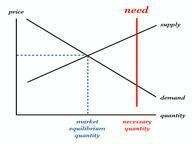Quiz Answer Key and Fun Facts
1. Two types of approaches are widely used when it comes to the problem of measurement of 'utility'. What are those two approaches known as?
2. Which of the following is NOT a factor of production (or factor inputs)?
3. In traditional economic theory, four types of markets are identified. Which of the following is NOT one of them?
4. A Pure Competition Market and a Pure & Perfect Competition Market are the same.
5. The demand graph for which of the following markets is a 'kinked' graph?
6. Simple one: Total Cost (TC) of a product is comprised of various components. Which of the following options describes TC most accurately?
7. Who said, "Supply creates its own demand"?
8. In simplistic terms, what is the difference between Production and Consumption in an economy better known as?
9. This type of unemployment is due to the operation of the business cycle. It is generally suffered by Capitalist countries. It is also called 'Keynesian Unemployment'. What is this type of unemployment better known as?
10. Who first introduced the concept of 'multiplier'?
Source: Author
ace_sodium
This quiz was reviewed by FunTrivia editor
Linda1 before going online.
Any errors found in FunTrivia content are routinely corrected through our feedback system.
